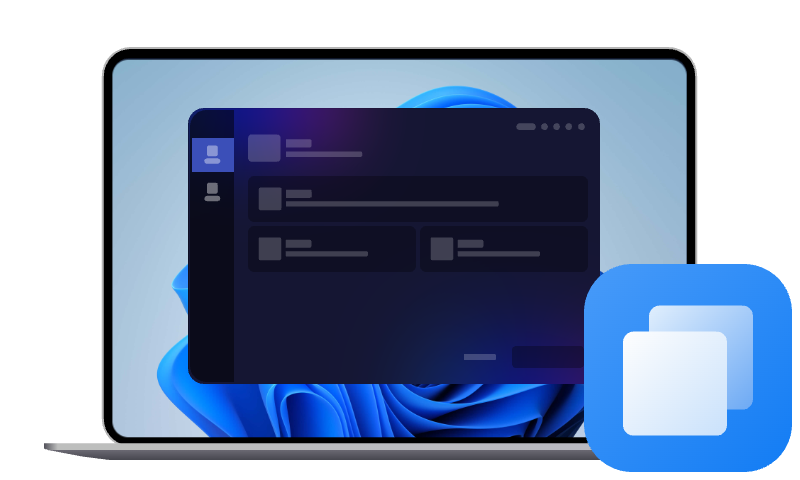Easiest Way to Clone mSATA SSD to Another mSATA SSD in Windows
Want to upgrade hard drive to gain peak performance by cloning mSATA SSD to another mSATA SSD? Learn detailed guide and important troubleshooting after mSATA cloning.
What Is an mSATA SSD and Why Clone It?
mSATA (Mini-SATA) SSDs use the SATA protocol in a compact form factor similar to mini-PCIe cards. You’ll typically find them in ultraportable laptops and small form-factor desktops. Its capacities range from 30 GB up to 2 TB, making it ideal for both primary system drives and secondary storage.
Why Clone mSATA to mSATA in Windows?
There are several common reasons for mSATA cloning:
- Capacity expands: Migrate from a small 120 GB mSATA SSD to a roomy 500 GB or 1 TB model without reinstalling Windows.
- Drive failure protection: Keep a bootable duplicate as a backup in case your primary SSD fails.
- Performance improving: Move OS or installed game to a faster, newer SSD model while preserving your setup.
Best Software to Clone mSATA SSD to mSATA SSD in Windows
AOMEI Cloner is dedicated SSD cloning software that allows you to clone mSATA to mSATA or NVMe SSD in a few clicks. It supports all Windows OS versions, including PCs and Servers, and works well with popular SSD brands like Samsung, Kingston, Transcend, Crucial, Dell, ASUS, etc.
It offers these highlights in disk cloning as shown below. This cloning software is compatible with SATA, mSATA, M.2 SATA, and NVMe SSDs. Download to take a closer look.

- Intelligent & Sector-by-Sector Clone: Copy only used sectors or make an exact duplicate of the source drive.
- SSD Alignment: Automatically aligns partitions to boost read/write performance and prolong lifespan.
- MBR/GPT Convert Cloning: Convert partition style between MBR and GPT before cloning.
- Bootable Cloning: Clone system disk without booting into Windows.
How to Clone mSATA SSD Using AOMEI Cloner and Ensure Boot
✅Preparations:
- Backup any important existing data on the target drive, as cloning will overwrite everything.
- Make sure the new disk’s capacity is at least as large as the space used on your source drive.
- Safely install or swap SSDs on your laptop or desktop. If your machine has only one mSATA slot, use a USB-to-mSATA adapter or external enclosure to connect the second SSD.
- Ensure both drives are recognized by Windows (you can check in Disk Management).
Step 1. Install and launch AOMEI Cloner. In the main interface, click “Clone” and then “Disk Clone”.
Step 2. Select your existing hard drive (mSATA) as the source disk.
Step 3. Select the new drive (mSATA) as the destination disk.
Step 4. Tick the “SSD Alignment” box to improve the SSD’s performance. Click “Start Clone”. The cloning time could fall anywhere from 30 minutes to several hours, depending on the size.
Step 5. When complete, replace your old mSATA SSD with the new mSATA disk. Or, you can just change the boot order in BIOS if you want to keep both SSDs.
- 🎯Pro tips:
- To move OS only from one mSATA SSD to another, please select the “System Clone” feature.
- You can convert MBR/GPT and resize partitions in the “Edit Partition” option.
- If you want to clone hard drive with bad sectors, check the “Sector by Sector Clone” box.
Troubleshooting Common Issues on mSATA Cloning
Even the most straightforward cloning process can encounter hiccups. Below, we dive deeper into the three most frequent problems users face when cloning an mSATA SSD, and how to resolve them quickly.
1. “No Bootable Device” Error
After cloning and rebooting, your system displays a “No Bootable Device” message or loops back into BIOS/UEFI without loading Windows. Try these fixes:
- Check Boot Order: Enter BIOS/UEFI (F2/F10/Del), move the cloned SSD to the top of the boot list, save and exit.
- Match SATA Mode: In BIOS → Storage Configuration, ensure AHCI/IDE mode matches your original setting.
- Repair Bootloader (if needed): Boot Windows install media → Repair → Command Prompt, then run: bootrec /fixmbr; bootrec /fixboot; bootrec /rebuildbcd
2. Windows Activation Prompt
After swapping in your cloned SSD, Windows prompts you to reactivate or displays activation errors. Why does it happen? Windows ties its license to your motherboard and sometimes to the original hard drive’s unique signature. Cloning can look like a significant hardware change. You can:
- Verify Status: Settings → Update & Security → Activation; note any error codes.
- Re-enter Key: Click Change product key and input your 25-character key.
- Run Troubleshooter: On Pro/Enterprise editions, use Activation → Troubleshoot to reconnect your digital license.
- Turn to Microsoft Support: If problems persist, select I changed hardware on this device recently for manual reactivation.
3. Cloned Drive Not Showing Full Capacity
In File Explorer or Disk Management, the cloned SSD shows its original partition sizes, leaving unallocated space at the end. By default, the cloning tool preserves the exact partition layout of the source disk. If your target SSD is larger, the extra space remains unassigned.
Follow this guide to recover the full capacity:
- During Cloning: In AOMEI Cloner’s Edit Partitions, choose Automatically adjust partition size.
- Post-Clone Resize: Extend volume using Disk Management.
- Alternative Tool: Use a professional partition manager’s Resize/Move Partition to drag and expand into unallocated space.
Reboot once more after each fix to confirm the issue is resolved.
Conclusion
That’s all for how to clone mSATA SSD to mSATA SSD with the assistance of AOMEI Cloner. The steps are quite simple. Just follow the guide and the things to note during the cloning.
AOMEI Cloner can not only clone mSATA SSD but also clone NVMe SSD to upgrade storage. It earns a good reputation among users due to its user-friendly interface and robust cloning performance.
Feel free to bookmark this guide for future upgrades or share it with fellow users embarking on their next SSD journey!

